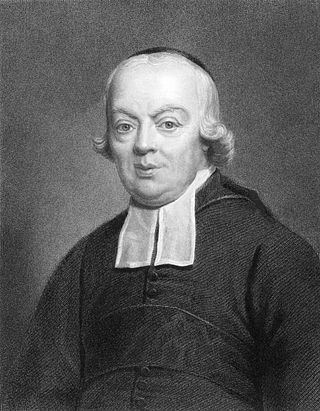
The Montreal Institute for the Deaf and Mute was a boarding school operated by the Clercs de Saint-Viateur (English: Clerics of St Viator) between 1848 and 1983 in Montreal, Quebec. [1]

The Montreal Institute for the Deaf and Mute was a boarding school operated by the Clercs de Saint-Viateur (English: Clerics of St Viator) between 1848 and 1983 in Montreal, Quebec. [1]
The Montreal Institute for the Deaf was founded as L'Institut catholique des Sourds-Muets [2] (The Catholic School for Deaf Boys) in 1848 [3] in Faubourg, Quebec, a neighbourhood in the northeastern corner of Montreal. [4] In 1850, the Institute moved to the Mile End area, at the corner of Boulevard St-Joseph and Rue Saint Dominique in Montreal. [4] [5] By 1887, [6] workshops for teaching the trades such as bookbinding, shoemaking and printing had been built within the school. [5]
In the 1921, the Institute moved [7] to a new building at 7400 Boulevard Saint-Laurent [8] in Montreal. [9] The building is now listed as a heritage building by the City of Montreal. [10]
In 1983, the Institute ceased teaching at the 7400 Boulevard Saint-Laurent location. [11]
The following year, the Institut catholique des Sourds-Muets changed its name to L'Institut Raymond-Dewar (English: The Raymond Dewar Institute). [12]
In 2012, 60 former students of the Institute filed a class action suit claiming they were sexually abused by priests in the school. [13] The initial class action was joined by other former students, bringing the total number of plaintiffs claiming abuse to 150 students with claims of abuse ranging between 1942 and 1982. [14] The claims by former students were not legally contested by the Clerics of St Viator. [15] This led to a settlement in 2016 of $30 million from the Clerics of St Viator and the Raymond Dewar Institute. [14] [16] The settlement was the largest settlement ever awarded for a sexual abuse case in Quebec history. [14] [17] The settlement, authorized in the Superior Court of Quebec, provided for a payment of $20 million from the Canadian Clerics of St. Viator, and $10 million from the Raymond Dewar Institute, the name the school adopted in 1984. [18] [19] [20]

Roch-Ambroise Cucurron Sicard was a French abbé and instructor of the deaf.

Louis Laurent Marie Clerc was a French teacher called "The Apostle of the Deaf in America" and was regarded as the most renowned deaf person in American Deaf History. He was taught by Abbé Sicard and deaf educator Jean Massieu, at the Institution Nationale des Sourds-Muets in Paris. With Thomas Hopkins Gallaudet, he co-founded the first school for the deaf in North America, the Asylum for the Education and Instruction of the Deaf and Dumb, on April 15, 1817, in the old Bennet's City Hotel, Hartford, Connecticut. The school was subsequently renamed the American School for the Deaf and in 1821 moved to 139 Main Street, West Hartford. The school remains the oldest existing school for the deaf in North America.

Quebec Sign Language, known in French as Langue des signes québécoise or Langue des signes du Québec (LSQ), is the predominant sign language of deaf communities used in francophone Canada, primarily in Quebec. Although named Quebec sign, LSQ can be found within communities in Ontario and New Brunswick as well as certain other regions across Canada. Being a member of the French Sign Language family, it is most closely related to French Sign Language (LSF), being a result of mixing between American Sign Language (ASL) and LSF. As LSQ can be found near and within francophone communities, there is a high level of borrowing of words and phrases from French, but it is far from creating a creole language. However, alongside LSQ, signed French and Pidgin LSQ French exist, where both mix LSQ and French more heavily to varying degrees.

Villeray is a neighbourhood in Montreal, Quebec, Canada. It is part of the Villeray–Saint-Michel–Parc-Extension borough and is situated in the north-central part of the Island of Montreal.
Jules Deschênes, was a Canadian Quebec Superior Court judge.
The Clerics of Saint Viator, abbreviated C.S.V. and also known as the Viatorians is a Roman Catholic clerical religious congregation of Pontifical Right for men founded in Lyon, France, in 1831 by Father Louis Querbes. Its patron, Saint Viator, was a 4th-century catechist in Lyon. The institute spread from its origins in France to Canada and later to the United States; it now has provinces and missions all over the world. They are a teaching order and are involved in parish ministries and all levels of education, from grade school through university. Its members add the nominal letters C.S.V. after their names to indicate membership in the congregation.

Ferdinand Berthier was a French deaf educator, intellectual and political organiser in nineteenth-century France. He was one of the earliest champions of deaf identity and culture.
Louis Querbes was a Catholic priest in France who founded the Clerics of Saint Viator (CSV), a religious order which specializes in teaching.

Collège Bourget is a French-language private education institution in Rigaud, Quebec, Canada. Despite its former religious involvements under the Roman Catholic branch, the students are no longer obliged to practice Catholicism or any other religion. The school provides education at the preschool, primary, and secondary lebels and even offers a grade 12. Bourget welcomes about 1100 day-students and offers a boarding service for high-school students, notably from the international program.

Marie Josephine Marguerite Blais is a Canadian politician, journalist, radio host and television host from Quebec. She was a Coalition Avenir Québec Member of the National Assembly of Québec and a previous Minister Responsible for Seniors and Informal Caregivers and Member of the Comité ministériel des services aux citoyens. She was a Liberal Member of the National Assembly of Quebec for the electoral division of Saint-Henri–Sainte-Anne in Montreal from 2007 to 2015, and served as the Minister responsible for Seniors, vice-chair of the Comité ministériel du développement social, éducatif et culturel and member of the Conseil du trésor.

Jean Massieu was a pioneering deaf educator. One of six deaf siblings, he was denied schooling until age thirteen when he met Abbé Sicard, who enrolled him in the Institute national des jeunes sourds de Bordeaux-Gradignan, the Bordeaux School for Deaf Children. There he learned to read and write French, and later helped develop the first formalized French Sign Language. This French Sign Language was later adapted into American Sign Language. He taught at the famous school for the deaf in Paris where Laurent Clerc was one of his students. He began work after a scandal in Paris in Rodez and dedicated his life to educating deaf children. Later he founded a deaf school in Lille, France.

Institut National de Jeunes Sourds de Paris is the current name of the school for the Deaf founded by Charles-Michel de l'Épée, in stages, between 1750 and 1760 in Paris, France.

Roch-Ambroise Auguste Bébian was one of the first hearing educators in France to achieve native-level fluency in French Sign Language. In 1825, he published an important book, Mimographie, which utilized a method of writing signs.

St-Viateur Bagel is a famous Montreal-style bagel bakery located in the neighbourhood of Mile End in the borough of Le Plateau-Mont-Royal, Montreal, Quebec, Canada.
Séquences is a French-language film magazine originally published in Montreal, Quebec by the Commission des ciné-clubs du Centre catholique du cinéma de Montréal, a Roman Catholic film society. It is the third oldest French film magazine in publication after Les Cahiers du cinéma and Positif.

Charles-Michel de l'Épée was a philanthropic educator of 18th-century France who has become known as the "Father of the Deaf".
Saint-Viateur or variant may refer to:
Collège Champagneur is a private French-language Roman Catholic coeducational school in Rawdon, Quebec. The school is associated with the Clerics of Saint Viator (C.S.V.), a Roman Catholic teaching order, and is named after Étienne Champagneur, a member of that order.

Yvonne Pitrois was a French writer. She wrote a variety of popular books, including multiple biographies of historical figures. Deaf from childhood, Pitrois advocated for the welfare of deaf and deafblind people in her work, including the founding of two magazines featuring advice and inspirational stories about deaf people. She was awarded the Montyon Prize in 1929 for her lifelong efforts in support of the deaf and deafblind community.
There are about 357,000 deaf and 3,210,000 hard-of-hearing people in Canada. The country can be split into Francophone and Anglophone regions, and has both French and English as official languages. The majority of Canada is considered Anglophone, while the province of Quebec along with small parts of New Brunswick, Ontario, and Manitoba are primarily French-speaking. The presence of these two main languages and cultures also brings forth different deaf cultures between the two regions. In Francophone regions, the official language used by deaf and hard-of-hearing people is Quebec Sign Language.
{{cite web}}: CS1 maint: postscript (link)